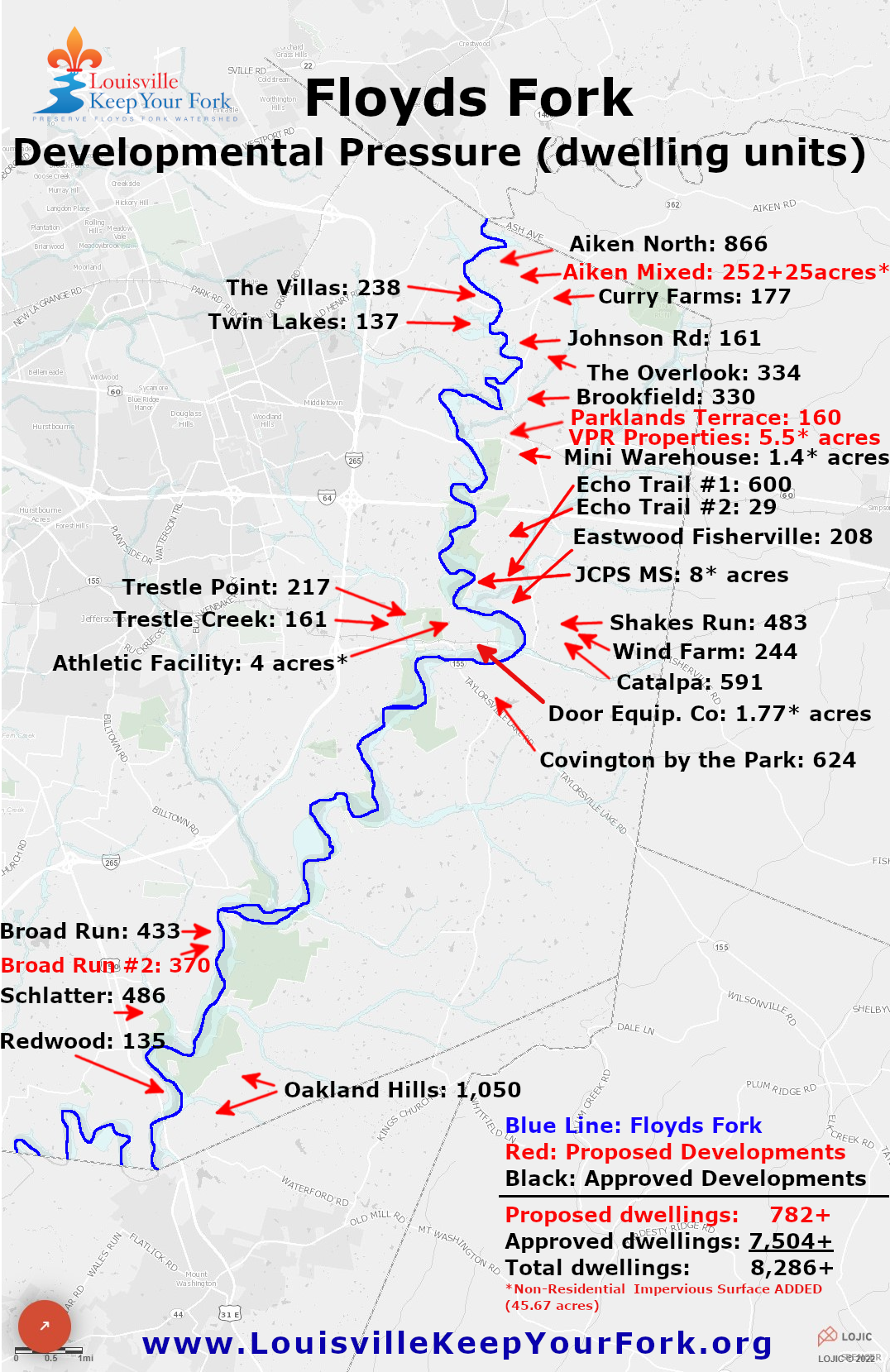(Part 1 of a 4-part series)
Urban sprawl creates strain on our residents, infrastructure, the environment, and local budgets.
Metro Louisville states that urban sprawl is a burden on residents, infrastructure, the environment, and even local budgets. Yet, instead of coming up with solutions to reduce the negative effects of urban sprawl, their “solution” is to simply increase density across the entire county, regardless of the current strain. They state: one of the most important actions to increase housing options within Louisville Metro is by updating the Land Development Code to remove regulatory barriers to allow for more density by-right (pg 11 of 46). Increased density by-right does not alleviate urban sprawl effects. In fact, adding dwelling units without the necessary infrastructure will dramatically increase the strain on residents.
Let’s take a moment & look at urban sprawl; it’s defined in multiple ways.
- Cambridge Dictionary: the spread of a city into the area surrounding it, often without planning
- Merriam-Webster: the spreading of urban developments (such as houses and shopping centers) on undeveloped land near a city
- Britannica: the rapid expansion of the geographic extent of cities and towns, often characterized by low-density residential housing, single-use zoning, and increased reliance on the private automobile for transportation
- Oxford Dictionary & Google: the uncontrolled expansion of urban areas
Many would describe urban sprawl as low-density development (single-family homes) on large plots of land (e.g. Lake Forest, Copperfield, The Overlook at Eastwood, Locust Creek, Twin Lakes, Oakland Hills, The Reserves at Broad Run, etc.).

If Metro Louisville were serious about relieving the strain on residents, strain they approved, they would focus on building communities close to employment centers and providing more public spaces (e.g. parks, playgrounds, community centers) for people to congregate. If the city were serious, they would focus on building communities, not just houses. However, Metro Louisville’s M.O. is to unabashedly approve developments, adding to the strain with no plan to alleviate the problems they are causing. Now they want to “remove regulatory barriers to allow for more density by-right,” even in environmentally-sensitive areas.
Strain on Our Residents

Metro Louisville defines 18′ roads as alleys (see graphic from Land Development Code Chapter 6.2-14). The Land Development Code also states (Chapter 7.3.10.A.):
In or adjoining any major subdivision of land…Director of Works, determines that the subdivision will be served by an adequate street network. In order to be considered adequate, the street or combination of streets providing most direct means of access to an arterial level street shall have a minimum roadway width of 18 feet of pavement.
According to Metro Louisville, alleys (18′ roads) are wide enough to provide an “adequate street network” for major subdivisions, subdivisions that could add 10,000+ additional vehicle trips per day.

Let that soak in. Our city approves developments on roads they call alleys and declares them “adequate” for adding major subdivisions containing 1,000s of new houses. The transportation industry considers 22′ the bare minimum road width for safety and carrying capacity, yet Metro Louisville does not. It’s an embarrassment. Nationally-recognized transportation engineers shake their heads in disbelief. These 18′ roads are so dangerous, even the Louisville Loop designers won’t bring the loop down these roads! We have asked!

Watching a bus try to pass a fire engine on an 18′ road is truly a miracle in realtime. Add a pedestrian, a biker, or any other variable and the situation immediately becomes life-threatening. Urban sprawl puts a strain on residents and Metro Louisville knows it, but they have no plans to mitigate this problem. Their solution: Remove regulatory barriers to allow for more density by-right. Plan 2040 Mobility Goals go out the window. The strain on residents is real.
Metro Louisville’s plan to combat “urban sprawl” is a classic smoke screen. They have no intention of actually dealing with the negative effects of urban sprawl. Instead their plan is to increase density throughout the city, ensuring smaller lot sizes and more housing are built by-right, and to write laws limiting or even eliminating neighborhood input (pg 19 of 46). They want to do this throughout the entire Louisville Metro/Jefferson County area regardless of the strain on residents, infrastructure, or the environment, all the while telling everyone in the city that those in the rural areas are a financial burden.
Next Blog: “Strain on our Infrastructure”

